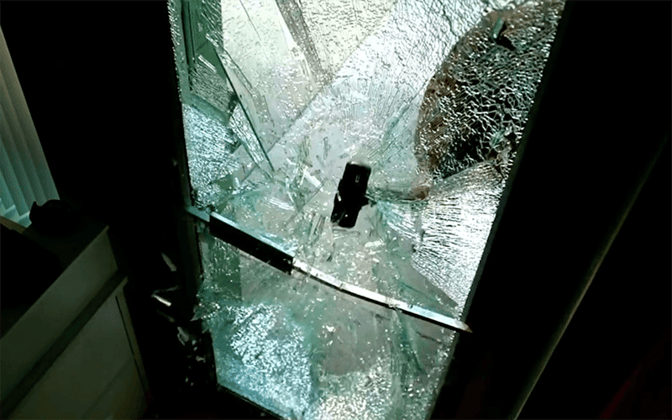We received the call late at night. Our client had been notified of an ongoing robbery in their main office and warehouse. The building housed their data center, and they needed to know they could still do business the next day.
With help from Loffler's Professional Services team, everything they needed was up and running by the next morning.
How? They had invested in disaster recovery and business continuity about a year before the robbery. Planning ahead can benefit any organization when disaster strikes.
Disaster Recovery Case Study Insights: How Total Tool Kept Working Despite a Disaster
Rewind to about a year before the robbery. Total Tool Supply had a data backup system to preserve their data on a daily basis.
What they didn’t have was a way to restore data quickly in the event of a disaster. If the worst were to occur, restoring from backup could take weeks, and vital systems they need to do business could be inaccessible.
Total Tool turned to Loffler for disaster recovery and business continuity (DR/BC). With Loffler's solution, if a business interruption caused Total Tool’s data center to become unavailable, they could switch to a secondary data center seamlessly. Everything would be up and running in minutes.
That’s exactly what happened, and exactly what they needed. Read the full case study.
Disaster Recovery vs Business Continuity: What's the Difference?
What Is Disaster Recovery?
Disaster recovery is how you will preserve data when the unexpected occurs. It's how you will restore your systems when they would be otherwise unavailable. In today's world, a disaster could mean a power outage, a robbery or natural disasters like fires, floods or tornados. A disaster could be a cyber-attack, too, where once malicious actors compromise your system with technologies like ransomware, your data could be locked up indefinitely. Total Tool’s solution provided disaster recovery because it allowed them to fail-over to an off-site data center when their main one was in jeopardy.
What Is Business Continuity?
Business continuity is how you will keep doing business in the event that your main systems and/or work locations are inaccessible. If a disaster happens, you need a way to recover your data and you need a way for your business to continue forward. For example, many organizations enacted a business continuity plan in early 2020 when they needed employees to work from home. In the case of Total Tool, they ended up relying on their secondary data center for several weeks before the St. Paul data center was ready again.
Four Reasons to Plan Ahead for Disaster Recovery and Business Continuity
Disaster recovery and business continuity are different concepts, but they work together and are usually part of the same conversation. When you plan ahead and implement a DR/BC solution, you’ll see the following benefits.
1. Always know who to call
When disaster strikes, there is an unavoidable feeling of panic. The building is on fire. You've been hit by ransomware. The roof has caved in. What now?
When you have a DR/BC solution in place, you can answer that feeling of panic with the knowledge of what to do next. Total Tool knew to get on the phone with Loffler while the robbery was taking place. One of our senior engineers worked with them to restore their systems, even while the robbers were still in the building. Total Tool knew what to do because they had prepared for the worst.
2. Recover data in a timely manner
Total Tool was not comfortable with a data recovery time of two weeks. They could afford to be down hours, but not weeks. When talking about recovering from a disaster, we use terms like RPO and RTO to get a better understanding of an organization's risk tolerance:
- RPO, or Recovery Point Objective, is the measure of how far back you need your data to restore from. Do need everything up to one minute ago? One hour? One day?
- RTO, or Recovery Time Objective, is the measure of how soon you need to have all systems back up and running.
We work with clients and design DR/BC systems based on the answers we get from those two measurements. For Total Tool, this meant not missing a beat, despite the robbery and its threat to their data center, they were open for business as usual the next morning.
3. Continue business without interruption
Because a DR/BC solution is designed to fit your RTO and RPO specifications, you can recover from a disaster in a way that fits your business. Total Tool wanted a system that would get them back up and running without interruption, and that’s what they got. By the next morning, employees at their branch locations around the United States couldn’t tell an incident had occurred. Business was uninterrupted despite the robbery.
4. Mitigate the risk of losing everything
A little bit of planning goes a long way. When planning to survive a worst-case scenario, risk must be balanced with cost. Having a DR/BC solution is much like having a homeowner’s insurance policy. You hope that you never have to use it, but you need to have it in place in the event that something does occur.
One of the main questions you should ask when writing a business continuity plan is what’s the cost of being down — all systems down, unable to work — for one minute, versus one hour, versus one day, versus one week?
The question then becomes: How much are you willing to lose? Without a DR/BC solution in place, you may be risking several days of revenue or your business itself.
This was something Total Tool understood, and in the end they were thankful for their foresight. The luxury of only being down overnight kept them from losing money. The price they paid for DR/BC was a fraction of what they would have lost had they been down for weeks.
Most business owners don't think that a business outage can happen to them. They haven't faced a disaster yet.
One thing that Loffler companies does really well is listen to our clients. We help them understand what their risks are. Instead of having a single solution that fits all of our clients, we have a wide variety of options for our customers to choose from to solve their business needs. Disaster recovery and business continuity are part of Loffler's Professional Services offerings.

Jeff Gullickson is an Account Executive who has been part of Loffler's IT Solutions Group since 2005. He serves as a trusted resource for clients to find the best fit for their business IT needs.




